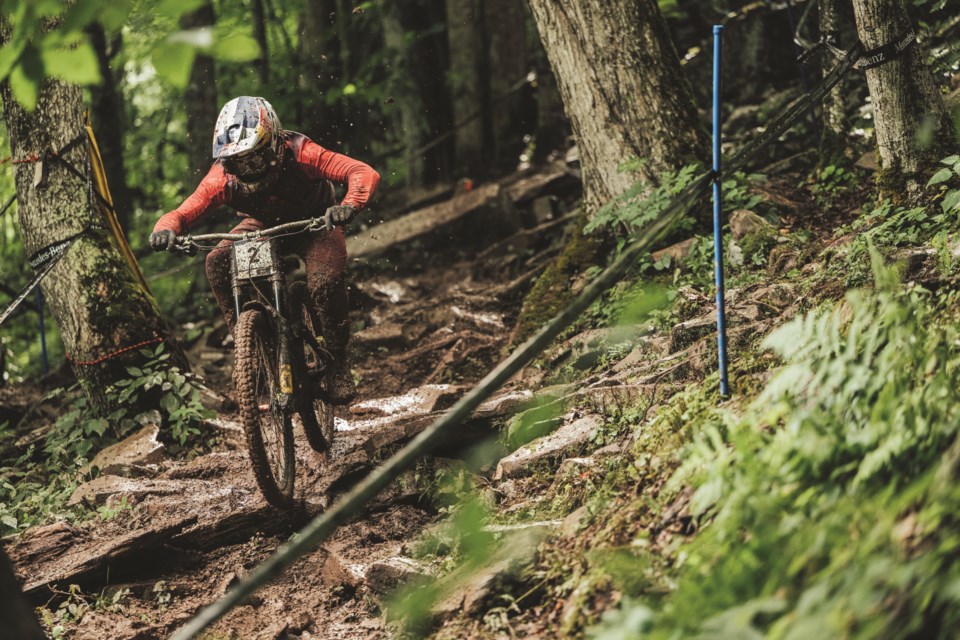I’ve never been a massive devotee of televised sports. In Australian summers, I’d always flip past test match cricket on TV, those endless watch-the-grass-grow games where nothing much seemed to happen over the course of several hours. Even Wikipedia supports this opinion in its unbiased, peer-reviewed definition of test matches: They are called Tests because the long, gruelling nature of matches makes them mentally and physically testing.
Long and gruelling isn’t my cup of tea, nor are barstool professional sports leagues such as the NHL or NFL. But I’ve always had a soft spot for the sports that are individually represented, which is probably why I flipped off the school cricket team and suffered on dusty cross-country mountain bike courses instead.
Watching mountain bike racing has gotten a lot more interesting in the last 10 to 15 years (though I’m sure the old-school downhillers will attest to some standout runs in the early 2000s when bikes were rapidly evolving). The media powerhouse that is Red Bull means more cameras, more splits and real-time straight-away speed comparisons. And while watching World Cup Downhill races over the course of the season can feel a bit like the same group of elites playing musical chairs on the podium, a couple of times a year there are some truly standout moments.
Moments like Champery, Switzerland in 2007, the first time a world cup had been hosted there. The notoriously steep track had riders even complaining about the safety of the pre-race track walk. A helicopter was constantly ferrying injured riders from their practice runs. Then, on race day, about halfway through the elite men’s start list, a deluge of rain came down, turning the track into a river. Finnish racer Matti Lehikoinen later admitted to stopping for a full 20 seconds on the track during his qualifying run the day before, moving his starting time earlier and avoiding the mid-afternoon storm that had been cycling through each day.
The Australian favourite and dominant world cup rider at the time, Sam Hill, wasn’t to be outdone. After watching the world’s best riders slide and crash their way down the muddy waterslide, the downhill community watched in complete disbelief as Hill rode the river as if it were dry, making up time the entire way down with precision on a bike no one thought possible. Hill placed third but won the day, cementing himself as one of the most skilled downhill riders of all time.
And who could forget Canadian Stevie Smith’s 2013 season-long cat-and-mouse game with the U.K.’s Gee Atherton? Atherton had the first two world cup stops in the bag before Smith took the win at Mont-Sainte-Anne, Que.—a downhill run that also went down as one of the best ever. Just 17 points separated the two at the final world cup race in Leogang, Austria, and all Smith had to do was finish faster than Atherton to win the overall title. In true Stevie Smith fashion, he smashed the winning time by 1.3 seconds and made history as the first-ever Canadian to win a world cup. You can watch these runs in all their dramatic glory in the documentary Long Live Chainsaw.
Last weekend at Snowshoe, W.Va. wasn’t the history-making world cup race on the same level as those described above, but watching the finals replay had me on the edge of the couch right to the end (spoiler warning if you haven’t caught up on the race results yet). It was playing out as a day for the underdogs with Irish up-and-comer Rónán Dunne getting time in the hot seat and perennial rank-and-file racer Bernard Kerr looking like he was going to clinch his first-ever world cup win. But something I’ve learned from watching downhill is to never underestimate the French. Amaury Pierron returned to race in Snowshoe after a brutal crash in Vallnord, Andorra two weeks prior (where he still raced and placed 13th). Pierron overcame doubts and sent himself down Snowshoes’s hellish rock gardens to take a well-deserved win after so many standout runs from other riders.
There’s been talk of Whistler hosting a World Cup Downhill race for years and the bike park trail team has even worked on an appropriately long racetrack in Creekside for some time, which may make an appearance in the Enduro World Series race this weekend. But while we don’t have world cup yet, Crankworx is back in town. So grab your noisemakers and we’ll see you trackside for Whistler’s biggest event of the year.
Update: Last Saturday, Aug. 6, Finn Iles won the Mont-Sainte-Anne World Cup with a blistering run beating the U.K.'s Laurie Greenland by 0.273 seconds. Losing his chain around halfway down the course, the young Whistlerite performed under all the pressure of being the fastest qualifier and the last competitor on the course. He took the win in front of an ecstatic Canadian crowd. It truly was an historic run, one that will live on with every Canadian mountain biker, especially those of us in Whistler who've seen this kid grow up on the local trails. Iles is the first Canadian to win a World Cup race since Stevie Smith, who last won Mont-Sainte-Anne back in 2013. With his World Cup career kicking into high gear, Iles surely has many moments like this ahead of him.
Long Live Chainsaw.
Vince Shuley enjoys watching racing more than actually racing. For questions, comments or suggestions for The Outsider email [email protected] or Instagram @whis_vince.




